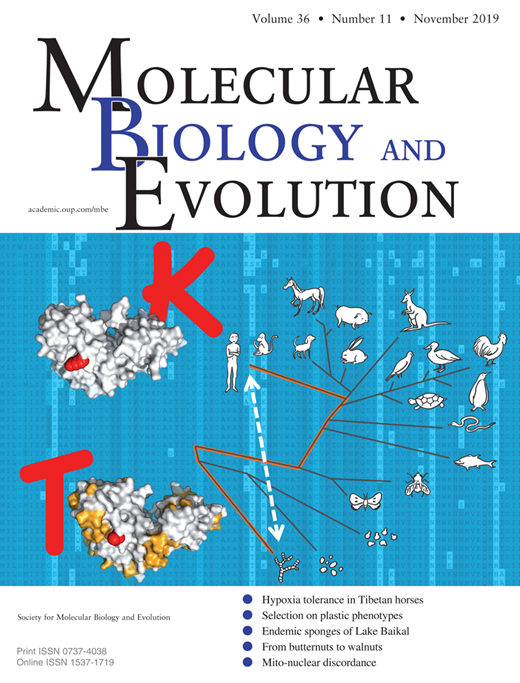|
|
GEMME is a fast, scalable and simple method to predict mutational landscapes from natural sequences. It demonstrates how deleterious effects of a protein mutation are identified by looking at the closest known sequence accepting the mutation in the evolutionary tree of sequences and at its epistatic changes. The article just appeared in Molecular Biology and Evolution.
Link to the article
Link to the webserver
|
We propose the concept of "interacting region" and the dynJET2 method toward deciphering the complexity underlying protein surface usage and deformability. Interacting regions account for the multiple usage of a protein's surface residues by several partners and for the variability of protein interfaces coming from molecular flexibility. dynJET2 predicts interacting patches by crossing evolutionary, physico‐chemical and geometrical properties of the protein surface with information coming from complete cross‐docking (CC‐D) simulations.
Link to the Article
|
The Team of Diatom Functional Genomics (R. Annunziata, A. Ritter, A.E. Fortunato, A. Manzotti, S. Cheminant Navarro, J.P. Bouly and A. Falciatore), in collaboration with the team of Biology of Genomes (Nicolas Agier) and Marco Cosentino Lagomarsino at the LCQB characterized the circadian rhythms of the marine diatom Phaeodactylum tricornutum and identified the bHLH-PAS protein RITMO1 as the first known regulator of these rhythms in these algae. This study, published on Proceedings of the National Academy of Sciences (PNAS) adds new elements to our understanding of diatom biology and offers new perspectives to elucidate timekeeping mechanisms in marine algae.
|
Phenotypic diversity can arise from changes in the gene content of the genomes but also from modifications in the regulation of gene expression. The "genetic networks" team compared gene expression in 8 yeast species to find "regulatory outliers", i.e. conserved genes with special expression profiles compared to their orthologues. The combination of this approach with other functional genomics data (transcriptomics analyses and chromatine immunoprecipitation followed by deep sequencing) led us to identify two genes which are involved in the survival of the human pathogen Candida glabrata upon iron starvation conditions. Iron starvation being a key challenge for C. glabrata survival in blood, this discovery may help us to better understand the invasive strategy of this emerging pathogen.
To the Article
|
Angela Falciatore received the Prix Coup d'Elan 2018 from the Bettencourt Foundation. This prize will help to improve infrastructures and working conditions for researchers in the Life Sciences. Starting in January 2019, Angela will lead the department "Chloroplast Biology and Light Sensing in Microalgae" in IBPC, Paris.
To the Article
To the Video
|
The latest publication of the new LCQB team "Telomere and Genome Stability" (Héloïse Coutelier and Zhou Xu) makes the cover of the December issue of Genes & Development! The article (Coutelier et al. 2018 Genes Dev.) shows that telomere-induced senescent cells can adapt to the DNA damage checkpoint safeguard mechanism to force cell division, leading to increased genome instability, with important ramifications for aging and cancer. The cover displays cells bearing a fluorescent reporter construct monitoring of the checkpoint status in single cells.
|
The group Evolution and immunology of pathogens ( Rouzine, Pedruzzi, Barlukova) published the article "Evolutionary Footprint of Epistasis" on PLOS Computational Biology.
|
The article:
Raucci R, Laine E, Carbone A. Local Interaction Signal Analysis Predicts Protein-Protein Binding Affinity, Structure, 2018 [ Link to the article ]
has been recommended in F1000Prime as being of special significance in its field by F1000 Faculty Member Alexandre Bonvin.
|
Pierre Louis Blaiseau of the Genetic Networks team recently published « Monod and the phenomenon of diauxie » in the Bulletin d’Histoire et d’Epistémologie des Sciences de la vie. This article described a part of the scientific activity of the Jacques Monod until then neglected by the historians: its interest during all its career for the mechanisms of enzymatic inhibition. Besides, it showed that, contrary to the standard narratives, the phenomenon of « diauxie » (double growth) was discovered by Monod during his thesis and not by the previous Frederic Diénert’s work
|














